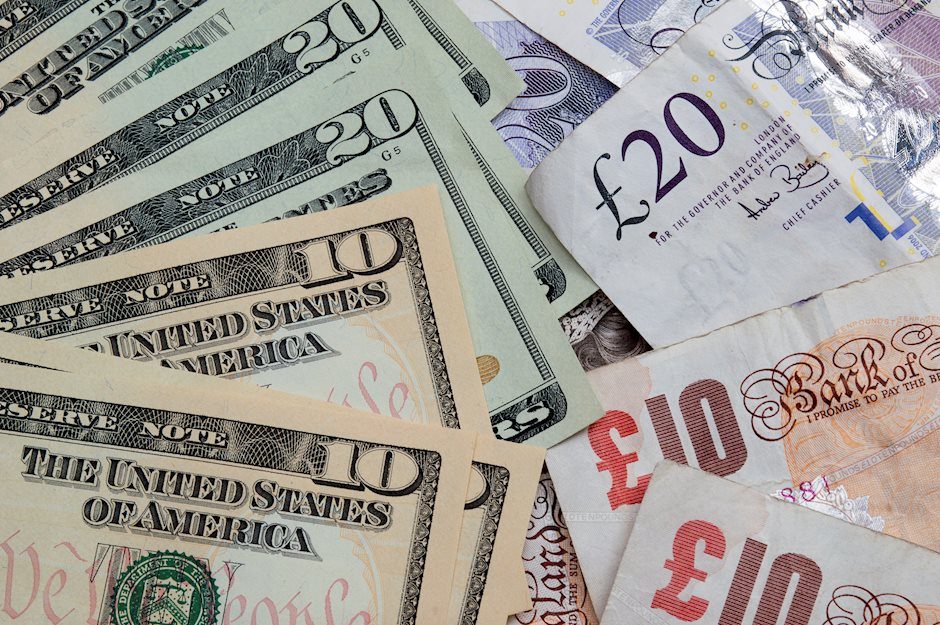GBP/USD holds below 1.2850, all eyes on Fed rate decision
- GBP/USD trims losses around 1.2840 in Wednesday’s early Asian session.
- The Fed is anticipated to leave interest rates unchanged at its July monetary policy meeting on Wednesday.
- The GBP weakens amid the speculation that the BoE would begin cutting rates from the August meeting.

The GBP/USD pair remains on the defensive near 1.2840 during the early Asian trading hours on Wednesday. The markets might turn cautious ahead of the Federal Reserve (Fed) Interest Rate Decision on Wednesday, followed by the Bank of England (BoE) policy meeting on Thursday.
The Fed is expected to hold interest rates steady at its July monetary policy meeting on Wednesday. The US central bank has been holding its benchmark funds rate in a range of 5.25-%-5.50% since July 2023, making the longest period of restrictive monetary policy in decades.
Market players will keep an eye on remarks from Chair Jerome Powell for more cues on the future path of policy rates. The markets expect the Fed to start easing its policy as soon as September as inflation edged nearer to the Fed’s 2% target.
Data released on Tuesday showed that US JOLTS Job Openings declined to 8.184 million in June, compared to May’s revised figure of 8.23 million, above the market expectation of 8.03 million. Meanwhile, US Consumer Confidence rose to 100.3 in July from the revised figure of 97.8 in June. This figure came in above the market consensus of 99.7, according to the Conference Board.
On the GBP’s front, investors continued to price in a potential rate cut by the BoE on Thursday, which dragged the Pound Sterling (GBP) lower against the USD. Trades see nearly 58% odds that the BoE will lower its borrowing costs by 25 basis points (bps) to 5%, Reuters reported.
Fed FAQs
Monetary policy in the US is shaped by the Federal Reserve (Fed). The Fed has two mandates: to achieve price stability and foster full employment. Its primary tool to achieve these goals is by adjusting interest rates. When prices are rising too quickly and inflation is above the Fed’s 2% target, it raises interest rates, increasing borrowing costs throughout the economy. This results in a stronger US Dollar (USD) as it makes the US a more attractive place for international investors to park their money. When inflation falls below 2% or the Unemployment Rate is too high, the Fed may lower interest rates to encourage borrowing, which weighs on the Greenback.
The Federal Reserve (Fed) holds eight policy meetings a year, where the Federal Open Market Committee (FOMC) assesses economic conditions and makes monetary policy decisions. The FOMC is attended by twelve Fed officials – the seven members of the Board of Governors, the president of the Federal Reserve Bank of New York, and four of the remaining eleven regional Reserve Bank presidents, who serve one-year terms on a rotating basis.
In extreme situations, the Federal Reserve may resort to a policy named Quantitative Easing (QE). QE is the process by which the Fed substantially increases the flow of credit in a stuck financial system. It is a non-standard policy measure used during crises or when inflation is extremely low. It was the Fed’s weapon of choice during the Great Financial Crisis in 2008. It involves the Fed printing more Dollars and using them to buy high grade bonds from financial institutions. QE usually weakens the US Dollar.
Quantitative tightening (QT) is the reverse process of QE, whereby the Federal Reserve stops buying bonds from financial institutions and does not reinvest the principal from the bonds it holds maturing, to purchase new bonds. It is usually positive for the value of the US Dollar.
Author

Lallalit Srijandorn
FXStreet
Lallalit Srijandorn is a Parisian at heart. She has lived in France since 2019 and now becomes a digital entrepreneur based in Paris and Bangkok.

















